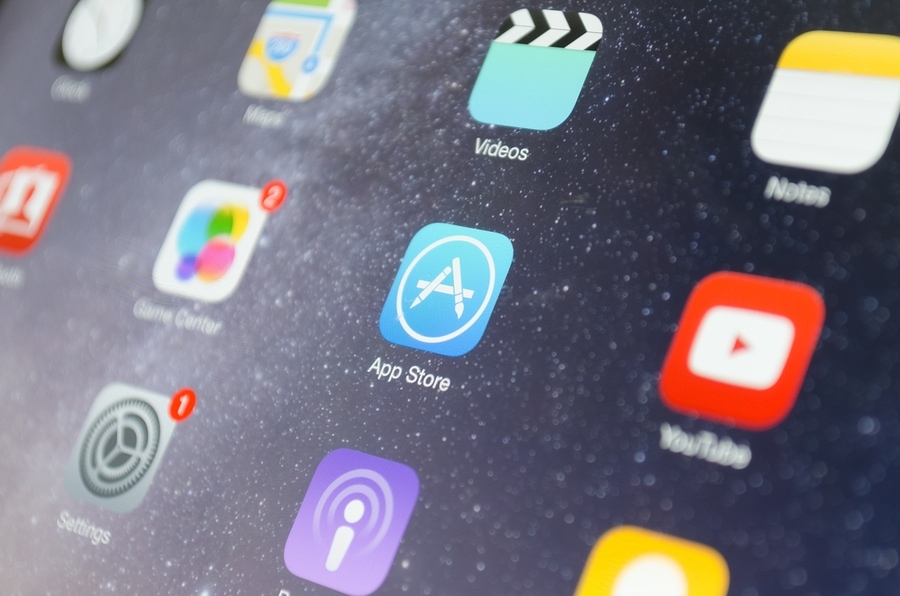There’s an app-install ad for that. Apple has claimed that just months after launching Apple Search Ads, conversion rates are “higher than 50%.” Apple App Store SEO is apparently on point, outpacing other app-install space players.
The tech firm made its latest foray into advertising in October, when Apple joined platforms like Facebook, Twitter, Google, Bing, and other mobile ad networks, to offer app-install ads at the top of Apple App Store app searches. Users of the App Store app are presented with several identified ads at the top of their search results.
Conversions for Only a Dollar
A recent article in Adweek has the story:
According to Apple, Search Ads average a cost per tap [Apple’s cost-per-click metric] of $0.50 for both small and big developers. When looking specifically at small developers that typically have less money to acquire mobile users than big brands like Uber or Booking.com, the average cost per tap drops to $0.25.
Apple claims that more than 50% of people who tap on a Search Ad then download the app, meaning the average cost per install of a Search Ad is $1. Those prices, according to industry standards and reports, can average out to be nearly one-fifth cheaper than other types of app-install ads, per Apple. In December, mobile analytics company Singular told Adweek that the average cost per install for Apple Search Ads was $1.31, while app-install ads on social platforms averaged $5.84, and display ads cost $2.99. (Emphasis mine.)
App Store SEO Is Good
With such high conversions and low ad costs, marketers are taking notice. The magic comes down to a couple of factors. The ads appear to be targeted from two angles.
First, like most ad networks, marketers bid on keywords that will place the ads at the top of App Store searches. Right now, these keywords tend to be competitor brand names and related terms, but more on that in a second. Apple’s self-serve ad platform has a tool called “search match” which automatically picks the best keywords for brands to buy their ads against. However, advertisers can also buy their keyword-based campaigns with an API plugin.
Second, and unique to Search Ads, ads are prioritized based on app category. It appears Apple matches ads for specific categories with searches in the same category, such that travel app ads won’t show up for game app searches and vice versa. Apple told Adweek its top categories so far are gaming, travel, and entertainment.
Marketers Buying Up Competitor Brand Names
An Adweek article from November has another interesting observation about the new platform: most Apple Search Ads are keyword targeting competitors:
Domino’s is currently buying ads against the keyword “McDonald’s.” Meanwhile, finance management site Mint is promoting its app to people who search for “Chase.” Walmart’s Jet.com is zeroing in on folks looking for online grocery service Peapod, and food-delivery service Eat24 is serving its ads alongside queries for “Pizza Hut.” Amazon is homing in on searches for CVS’s pharmacy-refill app, and ads for Boxed, an app that lets consumers buy packaged goods at wholesale prices, appear when people type in “Sam’s Club.”
Still Light Competition So Far
While Apple’s Search Ads platform smartly combines keyword bidding and categorical relevancy, there is one other factor at play. There aren’t a whole lot of brands buying big ad spends so far.
In an October 2016 analysis, Singular dug through $25 million in ad spend for app-install ads for 402 mobile apps and found only 3% went to Apple Search Ads. 42% was spent on social media app-install ads, the rest on various display ad buys.
“Clearly, there’s a lot of inventory that you can pull out of there,” Bill Riddell, a senior media specialist with Chacka Marketing, told Adweek. “As soon as people start adopting it and more people get onto it, it’s going to get more competitive. For right now, it’s a game of volume.”
Need help with your next app-install ad campaign? Call us at 313-338-9515 or email hello@kaleidico.com to learn how our full-service digital agency can help.
